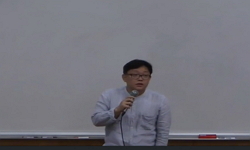This study is to analyze the efficiency of 107 Korean Tourist Hotels in 2009. This study used DEA model to evaluate 107 Korean tourist hotels in 2009. The first stage uses the CCR model to assess the efficiency. The second stage examine the distinct f...
http://chineseinput.net/에서 pinyin(병음)방식으로 중국어를 변환할 수 있습니다.
변환된 중국어를 복사하여 사용하시면 됩니다.
- 中文 을 입력하시려면 zhongwen을 입력하시고 space를누르시면됩니다.
- 北京 을 입력하시려면 beijing을 입력하시고 space를 누르시면 됩니다.

한국관광호텔의 규모별 포트폴리오에 따른 효율성 비교분석 = Comparative Analysis of the Efficiency According to the Size Portfolio of Tourist Hotels in Korea
한글로보기https://www.riss.kr/link?id=A100681870
- 저자
- 발행기관
- 학술지명
- 권호사항
-
발행연도
2012
-
작성언어
-
-
주제어
관광호텔 ; 효율성 ; 규모별 포트폴리오 ; Tourist hotel ; Efficiency ; CCR ; BCC ; Size portfolio
-
KDC
900
-
등재정보
KCI등재
-
자료형태
학술저널
-
수록면
1-23(23쪽)
- 제공처
-
0
상세조회 -
0
다운로드
부가정보
다국어 초록 (Multilingual Abstract)
This study is to analyze the efficiency of 107 Korean Tourist Hotels in 2009. This study used DEA model to evaluate 107 Korean tourist hotels in 2009. The first stage uses the CCR model to assess the efficiency. The second stage examine the distinct feature of each group after dividing two groups focusing the average efficiency. The third stage is one-way ANOVA approach which was applied to illustrate the influence of size portfolio according to each variables on hotel efficiencies. The fourth stage performs multiple regression formulae which are made with the difference in efficiency as dependent variables and sales, expenses, seven dummy variables as independent variables. Data envelopment analysis(DEA) model with seven inputs and two outputs was specified and used to estimate tourist hotel efficiency. Tourist hotels were operated with technical efficiency of average 52.8%. This indicates that almost 47.2% costs can be reduced without decreasing output if the tourist hotel can operate efficiently. This study has decision making units(DMU) 107, thus using nonparametric Pearson correlation method. The correlation between input factors and output factors appears to be significantly higher, therefore the DEA model can apply to all variables. Statistics about input and output variables for 107 tourist hotels in 2009. This study selected 107 DMUs. Input variables are seven factors (RM_st RM_d RM_su RM_h RM_TL NU9 EX9), and the output variables are two factors (SA9, PR9). ParadisehotelBusan has the maximum number of rooms, 538. Lotte Hotel is the largest hotel in Number of employees, 3,309, and labor expenses, 111,000 million. In the aspect of employee, large size group(above 201) has the highest efficiency. On the other hand, middle and small and middle size groups(51-200, below 50) show low efficiency, expecially middle size group is lower the loss than small size group. In the view of rooms, large size group(above 401) has the highest efficiency. On the other hand, middle and small size groups(201-400, below 200) show low efficiency, especially small and middle size group in rooms is net loss, meanwhile the middle size group are better and more proper alternative than small size group. Metropolitan is operated a little more efficient than non-metropolitan, metropolitan is more profitable than non-metropolitan. In the view of hotels grade, special 1 grade is more profitable than special 1 grade and others grade group. The tourist hotels with above average efficiency primarily exist small and middle size group(below 200 in employees, below 400 in rooms), metropolitan area, others grade(not special grade). The tourist hotels with below average efficiency primarily exist small size group(below 50 in employees, below 200 in rooms), non-metropolitan area, non-special grade. The efficiency of large employee scale is statistically significantly higher(mean=0.6632) than that of middle scale(mean=0.5135) or small scale(mean=0.4724). Also the efficiency of large room scale is statistically significantly higher(mean=0.7501) than that of middle scale(mean=0.5820) or small scale(mean=0.4770). But the efficiency of special 1 in tourist hotel rate is not statistically significantly higher(mean=0.6317) than that of special 2(mean=0.4649) or others( mean=0.5233). The metropolitan division is not statistical significant. To study the determinant factors which affect efficiency, multi-regression analysis has been used. Where ? represents the CCR efficient score as dependent variable. And expenses of employee, sales, large scale of employee, middle scale of employee, large scale of room, middle scale of room, metropolitan, hotel grade are independent variables, expecially other variable except for employee and sales are dummy variables. LN(EX) is a logarithm of salary expenses for employees. LN(SA) is a logarithm of operating profit. EMP_L is a dummy variable which is one for tourist hotels belonging to a large scale of employee, and zero otherwise. EMP_M is a dummy variable which is one for tourist hotels belonging to a middle scale of employee, and zero otherwise. ROOM_L is a dummy variable which is one for tourist hotels belonging to a large scale of room, and zero otherwise. ROOM_M is a dummy variable which is one for tourist hotels belonging to a middle scale of room, and zero otherwise. METRO_Y is a dummy variable which is one for tourist hotels belonging to metropolitan, and zero otherwise. It aims at capturing advantage of area in the activity. GRADE_1 is a dummy variable which is one for tourist hotels belonging to special 1 grade tourist hotels, and zero otherwise. GRADE_2 is a dummy variable which is one for tourist hotels belonging to special grade 2 tourist hotels, and zero otherwise. LnSA, ROOM_M are positive statistically significant, whereas LnEX, EMP_M, GRADE_2 are negative statistically significant. It is observed that the efficiency increases according to the sales and operating profit. And middle scale of room(ROOM_M) than small scale of room(ROOM_S) contributes to increase of efficiency. The efficiency decreases according to the salary for employees. And middle scale of employee( EMP_M) than small scale of employee(EMP_S) and special 2 grade than others grade(not special) cause the efficiency to drop down. The results of the large scale of employee(EMP_L), large scale of room(ROOM_L), metropolitan(METRO_Y), special 1 grade(GRADE_1) are not statistically significant. Therefore, the sales and middle scale of room than small scale of room have positive significant contributions to efficiency, and an increase in the salary for employees, middle scale of employee than small scale of employee, and special 2 grade than others grade are detrimental to efficiency. The metropolitan division is not statistical significant. No significant evidence can be found that efficiency is affected by hotel location. The efficiency of large scale tourist hotels is higher than that of small and middle scale tourist hotels. Inefficient hotels can look for their efficiency improvement strategies based on the benchmark of those efficient hotels. It is the time to pursue consistently regional decentralization strategy to distribute the tourists focused on Seoul. To activate all tourism hotels is to attract foreign tourists and to invigorate the tourism industry. The essential thing to complete is to expand a professional travel agent and to increase tourism infrastructure by civil and government joint management. Also providing such various functions as korean culture assets, shopping centers and shops for foreigners, entertainment places in addition to proper scale investment which was previously studied.
동일학술지(권/호) 다른 논문
-
- 아시아.유럽미래학회
- 구자성 ( Ja Seong Ku )
- 2012
- KCI등재
-
자기주식 취득의 기업가치 관련성에 대한 금융업 및 비금융업 비교
- 아시아.유럽미래학회
- 최영문 ( Young Moon Choi )
- 2012
- KCI등재
-
경찰관의 긴급출입권에 대한 법적 검토 -경찰관직무집행법 일부개정 입법예고안 제7조를 중심으로-
- 아시아.유럽미래학회
- 성홍재 ( Hong Jae Seong )
- 2012
- KCI등재
-
가족생활주기에 있어 아동기가족의 주부를 중심으로 노후생활의식에 따른 노후대책에 관한 연구
- 아시아.유럽미래학회
- 이애련 ( Ae Lyeon Lee )
- 2012
- KCI등재




 eArticle
eArticle






